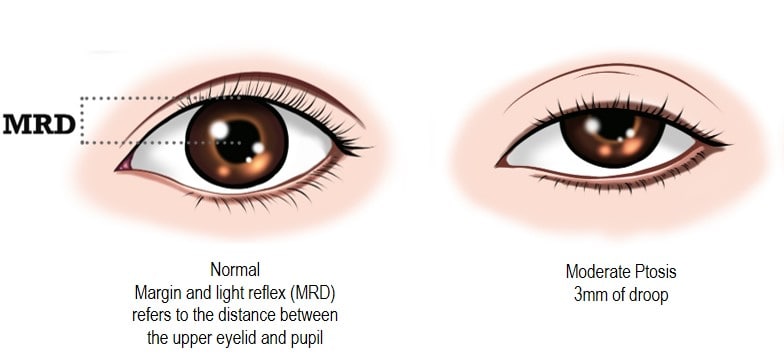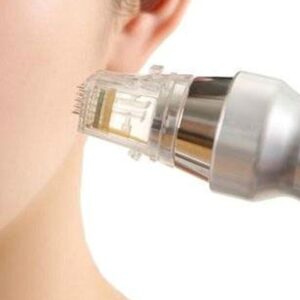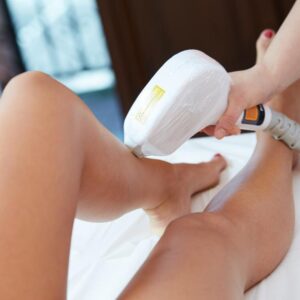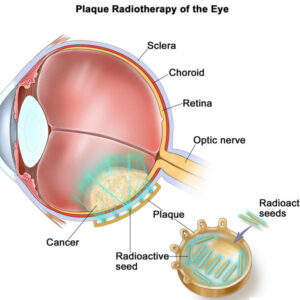Description
Treatment Familiarity:
Ptosis repair is a common procedure performed by ophthalmologists (eye doctors) to address drooping of the upper eyelid. This drooping can be caused by weakened muscles, aging, or neurological conditions. Ptosis repair can improve both vision and appearance.
Procedure Breakdown:
The specific surgical approach for ptosis repair depends on the underlying cause and severity of the droop. Here’s a general overview of the steps involved:
- Anesthesia: Local anesthesia with numbing drops or a small injection is typically used. In some cases, general anesthesia might be preferred, especially for children.
- Incision: A small incision is made in an inconspicuous location, often hidden within the natural crease of the upper eyelid.
- Muscle Adjustment: The surgeon addresses the underlying cause of the ptosis. This may involve:
- Tightening the levator muscle: This muscle is responsible for lifting the eyelid. The surgeon shortens or reattaches the muscle to improve its lifting ability.
- Removing excess skin or fat: In some cases, excess skin or fat tissue above the eyelid can contribute to ptosis. These tissues may be removed to create a lighter eyelid and improve its position.
- Closure: The incision is meticulously sutured (stitched) closed.
Who Can Benefit?
Ptosis repair is suitable for individuals experiencing:
- Drooping of the upper eyelid that obstructs vision, causing difficulty seeing.
- Difficulty applying makeup due to the droopy eyelid.
- A tired or fatigued appearance caused by the droopy eyelid.
- Ptosis that is causing neck strain as the individual tilts their head back to see clearly.
Who Might Not Be a Candidate?
Ptosis repair may not be suitable for everyone. It’s generally not recommended for:
- Individuals with uncontrolled eye infections: Infection increases surgical risk.
- People with unrealistic expectations about the outcome of surgery.
- Patients with severe dry eye: Surgery may worsen dry eye symptoms.
- Individuals with certain medical conditions that could increase surgical risk.
Advantages of Ptosis Repair:
- Improved Vision: Lifting the droopy eyelid can significantly improve vision, especially the upper field of view.
- Enhanced Appearance: Repairing ptosis creates a more alert and youthful appearance.
- Increased Comfort: Reduced need to tilt the head back to see clearly can improve comfort.
- Long-lasting Results: Ptosis repair results can be long-lasting with proper care.
Potential Complications:
- Overcorrection or Undercorrection: The eyelid position may not be perfectly adjusted, requiring additional surgery in some cases.
- Bleeding: Minor bleeding can occur during or after surgery.
- Infection: Although uncommon, infection is a potential complication requiring prompt antibiotic treatment.
- Dry Eyes: Temporary dry eyes are common after surgery and can be managed with lubricating eye drops.
- Lagophthalmos: Incomplete eyelid closure can occur in rare cases, potentially leading to corneal dryness.
Preoperative Care:
- Comprehensive eye exam to assess the cause and severity of ptosis, as well as overall eye health.
- Measurement of eyelid height and vision obstruction.
- Discussion of risks and benefits of ptosis repair with your ophthalmologist.
- Medical evaluation to ensure you can undergo surgery safely.
- Stopping certain medications that could increase bleeding risk.
Postoperative Care:
- Eye drops or ointment to prevent infection and inflammation.
- Wearing an eye patch or shield for a short period to protect the surgical site.
- Avoiding strenuous activity for a short period.
- Following up with your ophthalmologist for regular checkups to monitor healing, vision improvement, and address any concerns.





Reviews
There are no reviews yet.